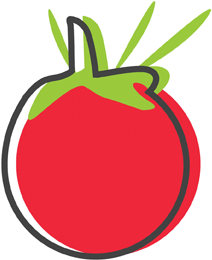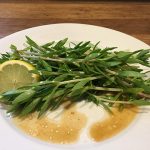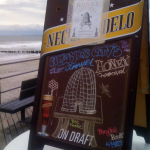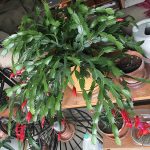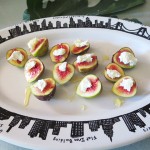New York City has finally passed a ban on most single-use plastic bags, catching up to 300 towns and cities across the U.S. and 55 countries in Europe. According to the Dept. of Environmental Conservation, New Yorkers use an estimated 23 billion plastic bags annually — each for about 12 minutes — and approximately 85% of this staggering total ends up in our landfills, recycling machines, waterways, and streets. And oceans! Living so close to the ocean, I feel a responsibility to respect and protect wildlife and our coastal environment. I’m thrilled about the New York State Bag Waste Reduction Act, as I’m sure many of you are too.
Beginning this Sunday, March 1st, it is illegal for most retailers to give you a plastic bag to carry purchases in. NYC has opted for a 5-cent paper bag fee just in case you forget your reusable tote bag. The restrictions and rules can be a little confusing as we transition into this plastic-free shopping realm. Gothamist.com as an in depth article outlining everything you need to know about how the plastic bag restriction will affect individuals and business owners. I strongly recommend reading about it here.
For the past several years, I’ve gotten into the habit of bringing my tote bags food shopping and to other stores. I’ve built up a large collection. For those of you who need to purchase reusable tote bags or want to “shop in style”, I’ve compiled a list of fashionable totes sold by our favorite local business. And men, don’t you worry, “the man bag” is so trendy these days.

Cuisine by Claudette sells a sturdy tote with their iconic hand drawn logo design on it. Take it to the gym or to CVS, it’s versatile! Purchase the Cuisine by Claudette tote at either of their two locations: 143 Beach 116th Street, Rockaway Park 11694 or 190 Beach 69th Street, Arverne

Have you been to the new eatery Thank You? The food is delicious. Drop by to try it and also pick up one of these rad reusable totes! Located at 214 B 116th St, Rockaway Park.

Buy a bag of books or take this fun typographic tote anywhere you go. Visit Avoid The Day’s new brick and mortar at 9904 A Rockaway Beach Blvd, Rockaway Park, to get this fun bag and others.

The Swellife has a few reusable tote options and they’re all adorable. Perfect for the farmers market or the beach! Visit the shop located at 91-08 Rockaway Beach Blvd, Rockaway Beach.

I love this hip, leopard, hand-painted tote bag from Life Eclectic. The bag is made of natural cotton fiber. Wear it out on the town or take it to the grocery store. It’s on sale now! Visit the website Free delivery within Rockaway!
Shop local and do your part to reduce single-use waste — it’s a win-win!
by Paula D.
on February 7, 2020 10:06 am in Recipes
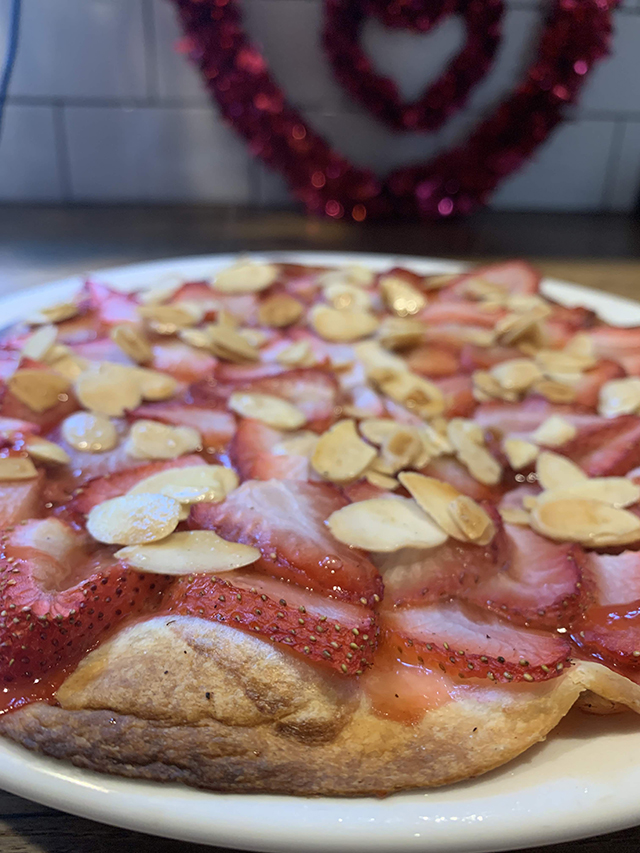
My husband thinks I’m silly for decorating the house for Valentine’s Day. He tolerates Christmas and Easter but he can’t help making snarky comments about this Hallmark holiday. I tell him, “But… it makes me happy!” I enjoy rearranging and switching things up in the house. Re-designing makes your living space feel fresh and It’s also an incentive to clean! Or, in Matt’s words “Yo this is corny.” Whatever.
In addition to seasonal decorating, I also love seasonal cooking. My mother-in-law Maureen dropped off a bunch of old magazines a few weeks ago. She knows I like flipping through with my morning coffee. In the Savory, May 2019 edition, I found a whole section on strawberry recipes, which would be in season at that time. It just so happens strawberries are perfect for Valentine’s Day desserts too.
The magazine had some tips worth sharing. “Pick like a pro” – look for bright, shiny strawberries, skip containers with smashed or shriveled ones. The color should be deep and even, without white or green patches and they should smell fragrant. “Wash and wait” – (This one I’m familiar with), water increases mold on strawberries (and most fruits). So leave the berries in their original packaging and rinse in cold running water just before serving or cooking. Their shelf life is short, use within 2-3 days of purchase. “Get your vitamins” – despite their sweetness, strawberries are relatively low in sugar, they provide fiber, antioxidants, and vitamin C. In fact, strawberries contain more vitamin C per serving and oranges!
The recipe that caught my eye was “Easy Strawberry Almond Tart ”. I think it was the ”easy” part that appealed to me. Using a flour tortilla you can make a delicious seasonally appropriate Valentine’s Day tart. Mine came out great. I could smell the strawberries as they came out of the hot oven. The butter, sugar, and berries formed a glaze. Make sure you slice the strawberries thinly, mine could have been a little less chunky. Use a pizza cutter to slice it up, that worked well for me. It looks impressive and is a quick dessert to make that will impress guests or your significant other.
As I was preparing the dish, I realized you can make this with blueberries, raspberries or experiment with other fruits. Maybe honey or maple syrup can be a nice sugar substitute. Shaved milk chocolate?!
Ingredients:
(Serves 4, ready in: 30 min.)
8-16 oz. strawberries
4 tbsp butter, softened
2, 8-inch flour tortillas
2 tbsp sugar
2 tbsp slivered almonds, toasted
Directions:
Preheat oven to 400°F. Line a baking sheet with parchment paper. Hull and thinly slice the strawberries. Spread the butter onto both sides of the tortillas and place them on a baking sheet. Sprinkle the tops of tortillas with the sugar. Arrange strawberries on tortillas. Bake 20–25 min., until golden and crisp.
While the tart is cooking, lightly brown the almonds in butter on med-low, in a small frying pan on the stovetop. Occasionally stir. Remove the tart from the oven. Top with the almonds. Cut into quarters and serve. Eat hot, right out of the oven!
There are a few other noteworthy strawberry dessert recipes in that edition of Savory. Find them here. If you try any of them, let me know how they turn out.
Happy Valentine’s Day to all my readers, I love ya!

by Paula D.
on February 7, 2020 10:03 am in Food
Here are some strawberry dessert recipes that look worthy. Check out my post here, where I tried the Easy Strawberry Tart recipe.
Recipes from savoryonline.com.com
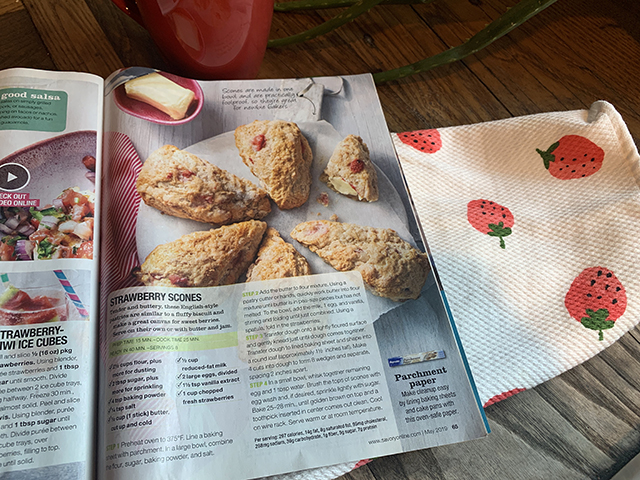
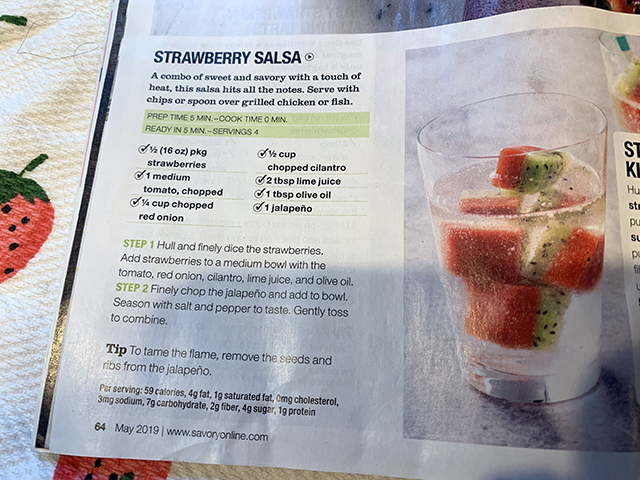

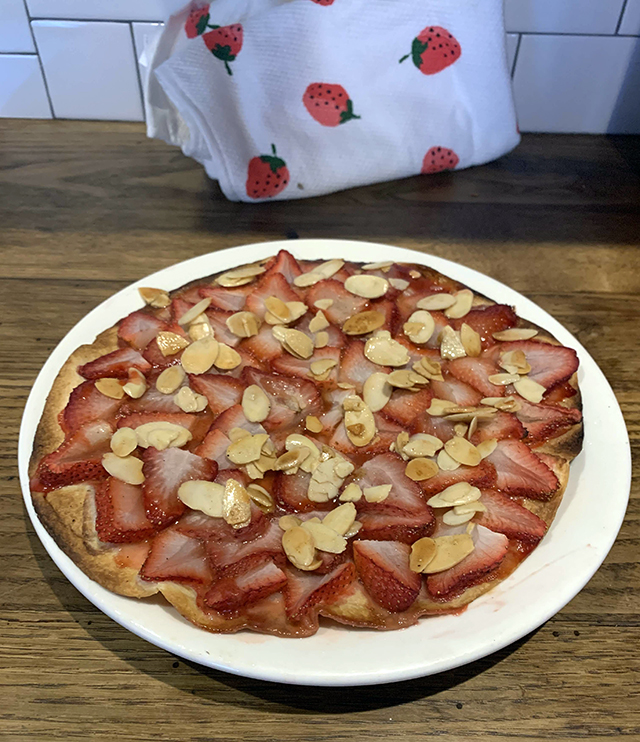
At The Wave, the art department has a long-standing tradition of ordering split pea soup for breakfast on Thursdays. And it must be from The Restaurant. Our former office was just across the street from the luncheonette, located in the shopping center at 8605 Rockaway Beach Blvd. Veteran graphic designer Janette Rappo would pick up the soups for everyone, taking the headcount the night before. But I never thought to partake. After all, pea soup for breakfast?
While we’re enjoying the new amenities on Beach 129th Street, the designers have been missing their warm pea soup breakfast. Then a few weeks ago Janette called out, “Who wants pea soup tomorrow?! We’re only 10 minutes away, we can still get it”. With all the renewed soup excitement, I decided to give it a shot.
So last Thursday I volunteered to pick it up before work. “5 large split pea soups please,” I said to the waitress at the counter. “This must be for The Wave.” She replied. I explained how everyone was going through “split pea withdrawal” since the move and the team is in desperate need of the coveted cup. I added, “And this will be my first time!”
While I was waiting for my order, I spoke with Nick Plevritis co-owner of The Restaurant. Along with his parents, Peter and Kathy Plevritis, they have owned the diner for almost 30 years now. Nick grew up in the restaurant industry, learning everything from watching his parents put in the hard work it takes to run a successful small business.
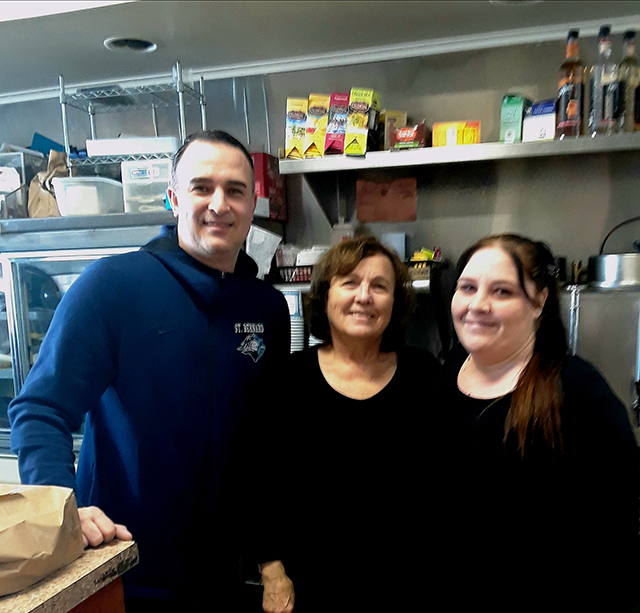
Nicholas Plevritis Kathy Plevritis and Waitress Sarah Gearin of The Restaurant
I asked Nick about the pea soup recipe, “It’s my father’s recipe. You’d have to ask him about the ingredients.” I got the feeling that it was a secret recipe so I didn’t want to push it! I did learn there’s no ham, it’s vegetarian. I also asked, “If the pea soup is so good, why only sell it on Thursday?” Nick explained each day of the week is a different soup and different customers have their own favorites. I was told the lentil soup is stellar and maybe the most popular is the cream of turkey soup served up on Saturdays.
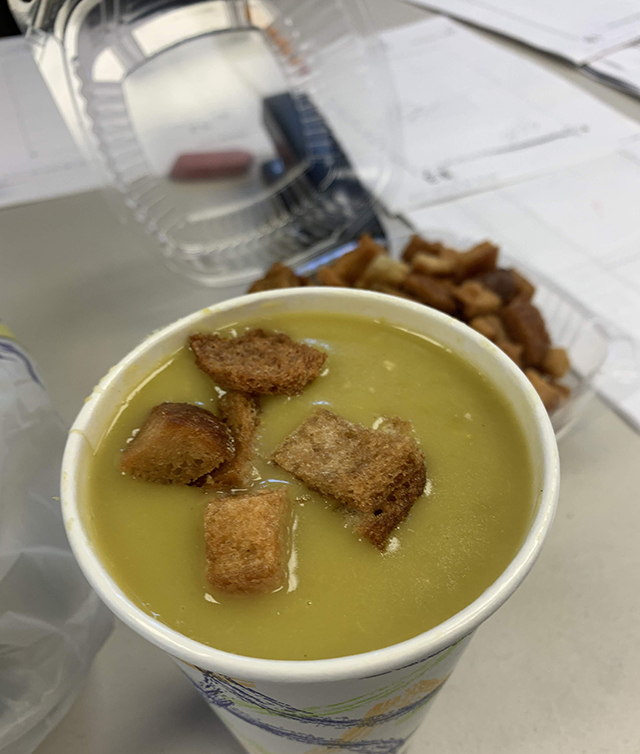
Hot soups in hand, I drove up to Beach 129th Street. Everyone was excited about the steaming delivery.
I spooned my first mouthful and it all made sense. The split pea soup is absolutely delicious! It was hearty and full of flavor. It has just the right amount of salt. There must be onions, carrots, and celery in the mix. The soup is pureed for a professional creamy texture. It comes with a large portion of homemade croutons which seem to be deep-fried for an excellent crunch – a perfect complement to the smooth soup.
Mark Hogan, our cover designer and ad man extraordinaire saw me fumbling with a small spoon. He explained it’s better to just drink the soup straight from the cup. He was right. This technique is easier and you get a bigger gulp of flavor.
Stay warm with a hot cup of split pea soup from The Restaurant, or try their other tasty home-style eats. The Restaurant is located at 8605 Rockaway Beach Blvd, Far Rockaway. Call for pick-up or delivery – 718.634.5809. Find The Restaurants on Facebook here
Previously, The Wave wrote about The Restaurant and the Plevritis family for our Monday Motivation series, Check out the article here.
















